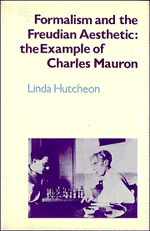Book contents
- Frontmatter
- Contents
- Preface
- Acknowledgments
- Introduction
- Part I The critical formation: science, formalism, and aesthetic contemplation
- Part II Psychoanalysis and literary criticism
- 5 Scientific psychology and art
- 6 Psychoanalysis and psychocritique
- 7 Psychocritique: formalism, science, and the value of problems
- 8 Psychocritique and the modern French critical context
- Conclusion
- Appendices
- Notes
- Index
5 - Scientific psychology and art
Published online by Cambridge University Press: 12 January 2010
- Frontmatter
- Contents
- Preface
- Acknowledgments
- Introduction
- Part I The critical formation: science, formalism, and aesthetic contemplation
- Part II Psychoanalysis and literary criticism
- 5 Scientific psychology and art
- 6 Psychoanalysis and psychocritique
- 7 Psychocritique: formalism, science, and the value of problems
- 8 Psychocritique and the modern French critical context
- Conclusion
- Appendices
- Notes
- Index
Summary
For psychoanalysis is one of the culminations of the Romanticist literature of the nineteenth century. If there is perhaps a contradiction in the idea of a science standing upon the shoulders of a literature which avows itself inimical to science in so many ways, the contradiction will be resolved if we remember that this literature, despite its avowals, was itself scientific in at least the sense of being passionately devoted to a research into the self.
lionel trillingTHE ATTEMPT to reconcile science and art is not unique to Charles Mauron or to his time or place. Nor has it been forgotten today. In literary criticism, as in the philosophy of science, the debate on their interrelations continues. It is the choice of a particular orthodoxy to be used both as a model and as a theory that makes Mauron's efforts all the more problematic – and intriguing. Freudian psychoanalysis might not seem an immediately obvious choice for a Frenchman whose nation's neglect and rejection of Freud before 1968 are matched in intensity only by its perhaps modish idolization of him since then. Nor, as we saw in the last chapter, was Mauron without strong reservations about the Freudian deterministic view of the psyche and of art.
- Type
- Chapter
- Information
- Formalism and the Freudian AestheticThe Example of Charles Mauron, pp. 97 - 114Publisher: Cambridge University PressPrint publication year: 1984



